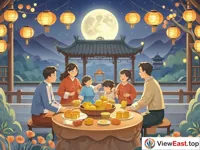
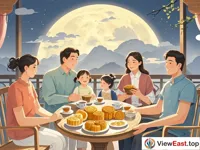
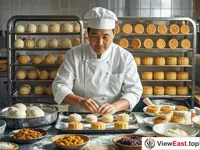
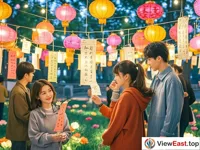
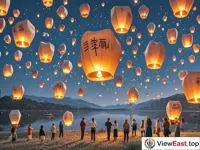
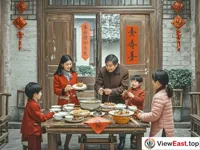
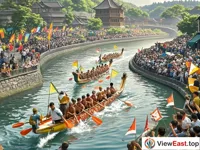

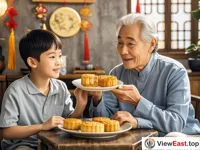
Introduction
The Mid-Autumn Festival, as one of the most important traditional festivals in China, carries profound cultural connotations and national sentiments. It is not just a holiday; it is a symbol representing reunion, harmony, and gratitude. On this day, no matter where people are, they will look up at the same bright moon, expressing their longing for family and their aspirations for a better life.
The Origin of the Mid-Autumn Festival
The origin of the Mid-Autumn Festival can be traced back to ancient moon worship activities. The ancients believed that the moon had mysterious power, so they held sacrifices on the full moon night of autumn to pray for a good harvest and safety. Over time, this activity gradually evolved into today's Mid-Autumn Festival.
Moon Worship and Moon Gazing
The core custom of the Mid-Autumn Festival is moon worship and moon gazing. Every household will place mooncakes, fruits, and other offerings on the night of the full moon for worship, and then enjoy the moon together, savoring the warmth of reunion.
The Legend of Mooncakes
Mooncakes are a symbol of the Mid-Autumn Festival, and their round shape symbolizes reunion and completeness. There is a widely circulated legend about the origin of mooncakes: at the end of the Yuan Dynasty, the folk rebels hid messages in mooncakes to pass on information, ultimately succeeding in overthrowing the rule of the Yuan Dynasty.
Customs of the Mid-Autumn Festival
The customs of the Mid-Autumn Festival are rich and colorful. In addition to moon worship and moon gazing, there are many other activities.
Guessing Lantern Riddles
Guessing lantern riddles is one of the traditional activities of the Mid-Autumn Festival. People write riddles on pieces of paper and hang them under colorful lanterns for others to guess. This activity not only adds fun to the festival but also reflects the wisdom and humor of ancient China.
Releasing Sky Lanterns
In some areas, people release sky lanterns, also known as Kongming lanterns, during the Mid-Autumn Festival. The sky lanterns are filled with blessings and wishes, and as they rise into the sky, they symbolize the realization of wishes and a beautiful expectation for the future.
Ancient Chinese Festival Culture
Ancient Chinese festival culture has a long and storied history, with each festival having its unique significance and customs.
Spring Festival
The Spring Festival, also known as the Lunar New Year, is the most important festival in China. People carry out a series of activities such as thorough cleaning, pasting Spring Festival couplets, setting off firecrackers, and paying New Year's visits to welcome the new year.
Dragon Boat Festival
The Dragon Boat Festival is to commemorate the patriotic poet Qu Yuan. On this day, people will hold dragon boat races, eat zongzi (rice dumplings), and hang mugwort to ward off evil and plague.
Qingming Festival
The Qingming Festival is a day for ancestor worship and tomb sweeping. People will go to the graves of their ancestors to clean and offer sacrifices, expressing their remembrance and respect for their forebears.
Conclusion
The Mid-Autumn Festival and other ancient Chinese festival cultures are manifestations of the Chinese nation's long history and splendid culture. They not only enrich people's spiritual lives but also strengthen the cohesion of the nation. Gaining a deeper understanding of these festival cultures allows us to better comprehend Chinese culture and find solace for our souls in modern society.
Exploring ancient Chinese festival culture, we can learn how to find a sense of ritual in the fast-paced life of festivals; studying traditional festivals, we can learn how to inherit and promote the excellent traditions of the nation. The essence of these festival cultures is not only the celebration of festivals but also the transmission of culture.